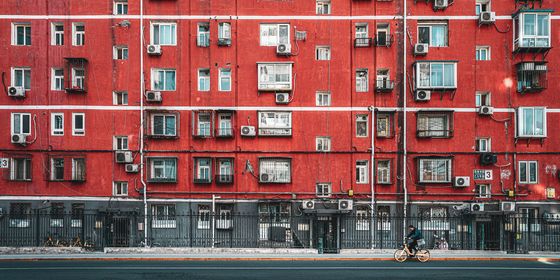How China is reimagining its urban landscape from the perspective of its youngest residents
Imagine you’re a 6-year-old child, around 1 meter tall, living in one of China’s largest cities and going out alone to get a Popsicle. Can you make it to the store and back home safely before it melts?
Setting out from your home on the 15th floor of an apartment block, you reach up high to push the button for the elevator, stroll down what might be dimly lit corridors, and eventually walk out of your apartment complex and into a world of tarmac roads and gray skyscrapers. Between you and the ice cream store, 600 meters away, are two busy intersections filled with speeding cars, honking buses, electric bikes, and bicycles, none of them stopping for pedestrians. You push the button on the lights and patiently wait for the green man to appear (like mom told you to do).
You eventually make it to the store and get your Popsicle. But now you can’t remember the way back, so you have to ask a stranger for directions to get home. As you make your way across the road, the smoggy air makes it hard for you to breathe. When you finally get back home, you’re probably left thinking that was no fun at all. Best to go with mom next time. Or just stay indoors on a smartphone.
This scenario is exactly what researchers tried to test out when they conducted the “Popsicle test” in Baiyun district, Guangzhou, in August 2021, with the aim of finding out what urban living is like for children under the age of 6. This test, which has been conducted around the world, is used as a measure of how “child-friendly” an area is. Researchers found children in Baiyun had a very hard time even making it to the shop, let alone getting home before their ice cream melted—a symptom familiar to many people living in large cities in China (and worldwide), which are not always kind to kids.
“I absolutely do not allow my child to play outside alone,” Zhang Yan, who has two children aged 8 and 1 in Beijing, tells TWOC. This is despite the fact that Zhang herself often played outside alone in Beijing when she was a child, less than 30 years ago, when Beijing had not grown as big and diverse as it is now. “All the neighbors knew each other, so it was relatively safe. But now there are all kinds of people in our residential complex, we don’t know all of them, so it’s not suitable for children to play outside alone.”













